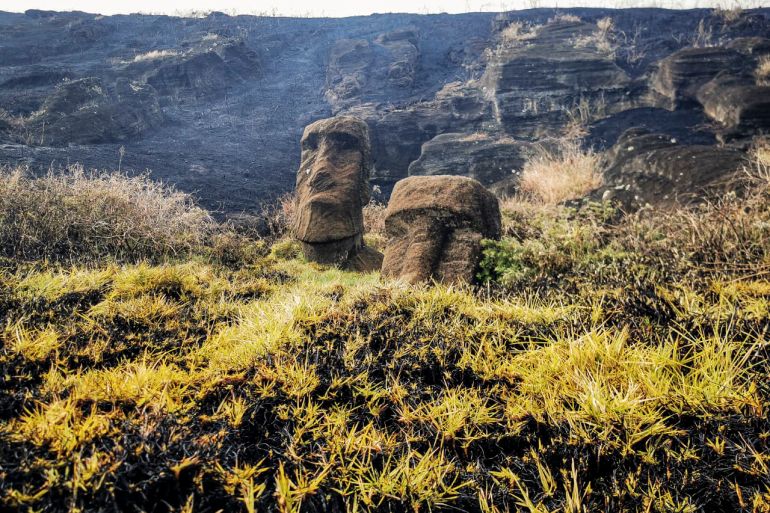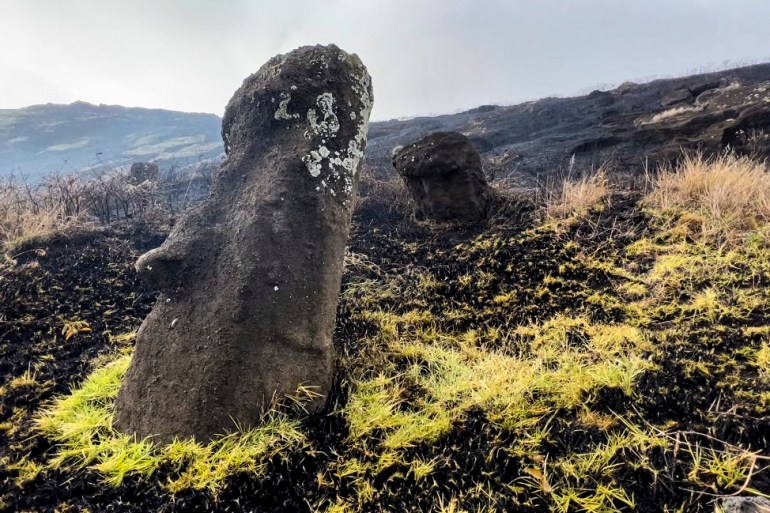Forest fire at Chile’s Easter Island damages famous moai
The total damage to the massive tuff megaliths that have made the island famous is still unknown.

A forest fire that tore through part of Chile’s Easter Island has charred some of its fabled monumental carved stone figures, known as moai.
“Nearly 60 hectares (148 acres) were affected, including some moai,” Carolina Perez, cultural heritage undersecretary, said in a Twitter post on Thursday.
Keep reading
list of 4 itemsEaster Island asks London museum to return its ‘stolen’ statue
Chile plans water rationing in capital after 12 years of drought
Chile’s new President Boric signs Escazu environmental treaty
On Easter Island, which lies some 3,500 kilometres (2,175 miles) off the west coast of Chile, 100 hectares have been razed by flames since Monday, Perez said.
The area around the Rano Raraku volcano, a UNESCO World Heritage site, was the most affected.
An estimated several hundred moai are in that area, as well as in the quarry where the stone used to carve the sculptures was extracted.
“The damage caused by the fire can’t be undone,” Pedro Edmunds, mayor of Easter Island, told local media.
There is still no report on the total damage.

The fire comes just three months after the island was reopened to tourism on August 5, after two years of closure due to the COVID-19 pandemic.
Before the pandemic, Easter Island – whose main livelihood is tourism – received some 160,000 visitors a year, mostly on two daily flights.
With the arrival of COVID-19 in Chile, tourist activity was completely suspended.
The island was long inhabited by Polynesian people before Chile annexed it in 1888.
The stone figures, thought to be representations of ancestors, were built in approximately 1400 – 1650 AD by the natives of the island, also known as Rapa Nui.
Easter Island’s sacred moai statues have been damaged by a fire that is believed to have been started deliberately.
Nearly 148 acres of the World Heritage site, also known as Rapa Nui, has suffered “damage that can’t be undone” according to the local mayor ⤵️ pic.twitter.com/9KVFCQ8mJy
— Al Jazeera English (@AJEnglish) October 7, 2022